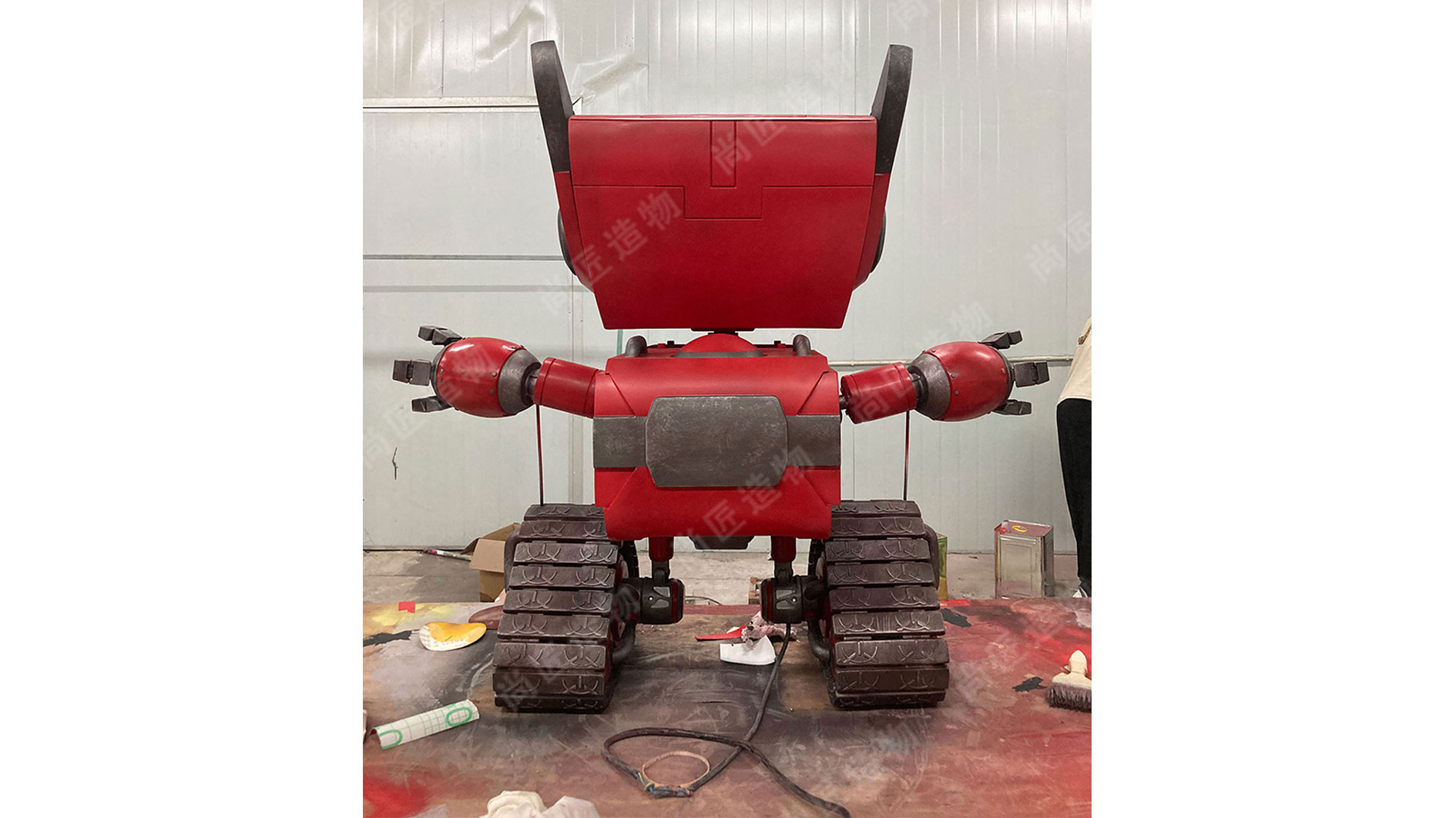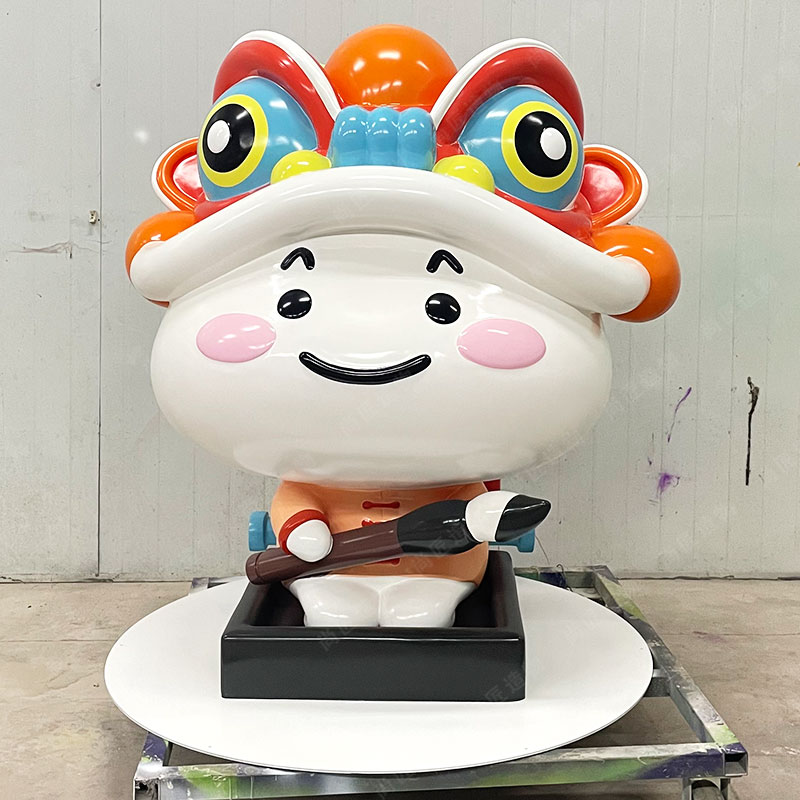Key Takeaways
Realistic branded mascot sculptures transcend mere promotional items; they become powerful, tangible manifestations of a brand's identity. This guide explores the transformative journey from concept to iconic 3D embodiment, revealing how meticulous craftsmanship unlocks significant brand value. Key insights include understanding the detailed sculpting process that brings mascots to life, the critical importance of infusing sculptures with authentic personality traits mirroring the brand voice, and the artistry involved in visually communicating core values. Furthermore, we examine how these sculptures evolve into memorable landmarks, fostering deeper emotional bonds with audiences. Ultimately, the strategic deployment of highly realistic mascot sculptures significantly boosts brand recognition and cultivates lasting customer loyalty through their physical presence.
"A well-executed mascot sculpture isn't just seen; it's experienced and remembered, solidifying the brand's place in the physical world and the consumer's mind." - Brand Identity Specialist.

The Sculpting Process Demystified
Transforming brand mascots into tangible sculptures follows a structured yet adaptable workflow. Initially, artists analyze the mascot's 2D design and brand guidelines to capture essential traits. Next, digital modeling software creates precise 3D blueprints, allowing adjustments for proportions and expressions. Physical sculpting then begins using clay or polymer compounds, layering details like fur textures or facial contours through specialized tools. Crucially, this phase integrates brand identity by emphasizing signature colors or symbolic features. Before final production, miniature prototypes undergo stakeholder reviews to ensure alignment with marketing objectives.
| Stage | Purpose | Key Considerations |
|---|---|---|
| Digital Modeling | Create accurate 3D framework | Scale adjustments, pose dynamics |
| Material Selection | Ensure durability & aesthetics | Weather resistance, finish quality |
| Hand-Sculpting | Add lifelike details | Texture depth, emotional expression |
| Prototype Testing | Validate brand alignment | Color accuracy, audience perception |
Throughout development, referencing established Cartoon sculpture techniques helps achieve appealing stylization without sacrificing realism. Material choices evolve based on installation environments—indoor pieces may use lightweight resins, while outdoor monuments require reinforced metals. This methodical approach balances artistic interpretation with technical precision, seamlessly bridging concept and physical form.
Crafting Lifelike Mascot Personalities
Translating a two-dimensional mascot design into a believable three-dimensional sculpture demands meticulous attention to personality embodiment. This crucial step involves far more than simply replicating the character's shape; it requires capturing its unique essence through posture, gesture, and expression. Sculptors must carefully analyze the mascot's defined traits – is it energetic and playful, wise and authoritative, or perhaps friendly and approachable? Every detail contributes: the angle of a head tilt suggesting curiosity, the tension in a limb conveying readiness for action, or the specific curve of a smile fostering warmth. Subtle anthropomorphic touches, like a knowing glint in the eye or a relaxed stance, transform inert material into a character that feels alive and relatable. Achieving this lifelike quality ensures the mascot resonates immediately with audiences, creating a foundation for genuine connection. Beyond visual accuracy, capturing these nuanced personality traits bridges the gap between a static symbol and a memorable entity that people instinctively understand and engage with, paving the way for it to truly embody the brand's core values as a Realistic sculpture.

Embodying Core Brand Values Artfully
Translating abstract brand principles into three-dimensional form requires deliberate artistic interpretation. Mascot sculptures become physical manifestations of a company's mission, personality, and ethos. Designers achieve this by analyzing core values—whether innovation, trust, or playfulness—and translating them into visual language through posture, expression, and materiality. A mascot conveying reliability might feature grounded, stable proportions and warm textures, while one representing cutting-edge technology could incorporate sleek angles and modern materials like stainless steel sculpture. Every artistic decision, from the curve of a smile to the tilt of the head, communicates subconscious messages. The sculptor’s challenge lies in avoiding literal clichés while ensuring immediate recognizability. Successful embodiments resonate because they capture intangible qualities in tangible forms, allowing audiences to physically engage with the brand’s foundational identity. This process transforms corporate philosophy into an approachable, memorable presence.

Creating Iconic Landmarks from Mascots
Transitioning mascot sculptures from promotional items to enduring landmarks requires strategic placement and narrative integration. Permanent installations in high-traffic locations—such as corporate plazas, retail entrances, or city centers—transform these figures into community touchpoints. Consider how the Rockefeller Center Atlas sculpture or Copenhagen’s Little Mermaid transcend commercial origins through accessible symbolism. Successful landmarks anchor brand identity in physical spaces while inviting public interaction, like photo opportunities that organically spread brand visibility.
The process involves scaling sculptures for environmental harmony and using durable materials that withstand weather and time. For instance, bronze and reinforced polymers ensure longevity while maintaining intricate details. Integrating local cultural elements during design—such as regional motifs or posture reflecting community values—fosters deeper acceptance. This approach turns mascots into shared reference points, much like professional IP character sculpture installations at theme parks. Such landmarks become navigational aids within urban landscapes, reinforcing brand recall through daily exposure. Ultimately, they evolve beyond advertising into beloved local icons that narrate a brand’s legacy across generations.
Deepening Emotional Brand Connections
Realistic branded mascot sculptures transcend mere physical representations; they act as powerful conduits for forging profound emotional bonds between a brand and its audience. When consumers encounter a meticulously crafted, lifelike version of a beloved mascot character in three-dimensional form, it triggers a deeper level of recognition and attachment. This tangible presence makes the brand's personality feel more authentic and relatable, moving beyond logos or slogans to create a shared, visceral experience. Unlike fleeting digital interactions, a physical sculpture invites touch, proximity, and prolonged engagement, embedding the brand identity into real-world memories and experiences. This physical interaction fosters a sense of familiarity and trust, transforming abstract brand values into something concrete and emotionally resonant. By giving the mascot a permanent, high-quality physical form, often using durable materials like fiberglass sculpture, brands create enduring touchpoints that consistently reinforce positive feelings and strengthen the overall emotional connection consumers feel towards the brand's core identity and message.
Maximizing Recognition Through Realism
Achieving a high degree of realism in branded mascot sculptures is not merely an aesthetic choice; it is a strategic imperative for maximizing brand recognition. Lifelike details – precise textures, accurate proportions, and authentic expressions – create a powerful, consistent visual anchor. This consistency ensures the mascot is instantly recognizable across diverse platforms, from digital advertising to physical installations, reinforcing the brand identity at every touchpoint. Furthermore, realistic sculptures transcend the limitations of 2D logos or cartoonish representations. They possess a tangible presence that commands attention and lodges firmly in memory. Viewers connect the meticulously crafted physical form directly back to the brand it represents. Even subtle elements of movement, achievable through techniques like Kinetic sculpture, can enhance memorability and dynamism. Consequently, investing in sculptural realism transforms the mascot into an unmistakable beacon, significantly boosting spontaneous recall and solidifying the brand's visual signature in the consumer's mind.
Driving Loyalty with Tangible Embodiments
Beyond recognition and emotional resonance, lifelike branded mascot sculptures uniquely drive deep customer loyalty. This physical dimension transforms abstract brand feelings into concrete, memorable interactions. When customers can physically touch, pose beside, or even interact with a three-dimensional mascot representation, the brand relationship shifts from passive observation to active participation. A handshake with a meticulously crafted sculpture feels fundamentally different than seeing the same mascot on a screen; it creates a shared moment, a personal story tied directly to the brand experience. These tangible brand touchpoints become destinations, encouraging repeat visits and social sharing, as people naturally seek photo opportunities and share these encounters. This consistent, positive physical interaction builds a powerful sense of familiarity and trust over time. The permanence of a sculpture signals the brand's commitment and stability, fostering a perception of reliability that customers value. Such embodied experiences, often occurring at flagship stores, events, or public installations, are proven to foster a stronger, more enduring sense of belonging and allegiance than purely digital engagements.
Sculpture Strategies for Lasting Impact
Achieving enduring impact with branded mascot sculptures requires deliberate planning beyond initial installation. Material selection proves critical—bronze and weather-resistant polymers withstand environmental stressors while maintaining visual integrity for decades. Positioning strategies also contribute significantly: placing sculptures in high-traffic zones like corporate plazas or flagship store entrances ensures continuous audience exposure. Complementing physical presence with narrative integration strengthens longevity; consider how the Michelin Man’s evolving poses reflect the brand’s innovation timeline, allowing the sculpture to remain relevant through market shifts. Maintenance protocols form another cornerstone, with scheduled cleaning and structural inspections preventing deterioration. These approaches transform mascots from temporary installations into permanent brand assets that consistently reinforce identity across generations.

Conclusion
Realistic branded mascot sculptures represent far more than artistic achievements—they crystallize a brand's essence into enduring physical form. Throughout the creation process, meticulous craftsmanship transforms characters into three-dimensional ambassadors that communicate core values without words. These sculptures become cultural touchpoints, fostering recognition through their visual authenticity while inviting emotional engagement. Their tangible presence in spaces—whether corporate campuses, retail environments, or public installations—anchors brand narratives in shared human experience. The strategic investment yields compounding returns as sculptures evolve into beloved landmarks, continually reinforcing brand identity across generations. Ultimately, this fusion of artistry and branding creates timeless assets that transcend conventional marketing by building authentic, lasting connections between organizations and their communities.
Frequently Asked Questions
What makes branded mascot sculptures effective marketing tools?
Lifelike sculptures transform abstract brand characters into tangible, three-dimensional forms. This physical presence significantly deepens emotional connections with audiences, making brand values memorable and relatable in a way flat logos cannot achieve.
How important is realism in mascot sculptures for brand recognition?
High realism is crucial. Detailed, accurate sculptures become instantly recognizable landmarks. This visual fidelity ensures consistent brand representation across locations, directly boosting spontaneous recall and strengthening overall brand identity in the consumer's mind.
What materials are typically used for durable outdoor mascot sculptures?
Common choices include bronze, stainless steel, fiberglass reinforced with resin (FRP), and specific high-grade polymers. Selection depends heavily on budget, desired lifespan, environmental conditions, and the required level of intricate detail for the character.
Is commissioning a custom mascot sculpture a significant investment?
Yes, it represents a substantial investment due to the skilled artistry, design process, engineering, material costs, and fabrication time involved. However, the long-term value comes from its role as a permanent, high-impact brand ambassador driving recognition and loyalty for years.
How can the success of a branded mascot sculpture be measured?
Success metrics include increased foot traffic to its location, social media engagement (shares, tags, photos), brand sentiment analysis in related conversations, and surveys tracking brand recall and association lift before and after installation. Its iconic status often becomes self-evident.
 ch
ch English
English





